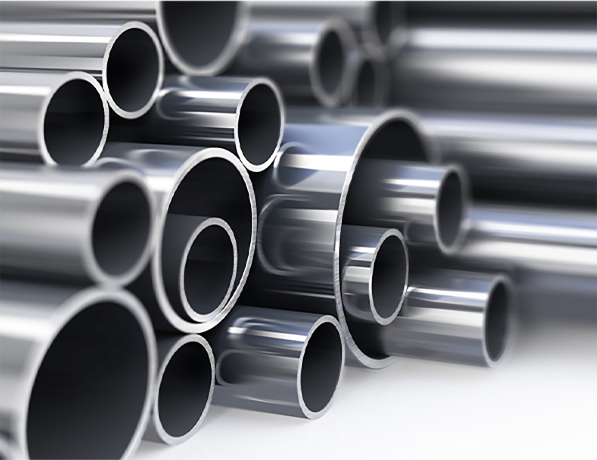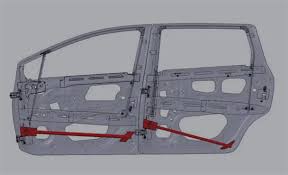- Material science fundamentals of cold drawn welded pipes
- Structural advantages and performance metrics
- Technical comparison of industry-leading manufacturers
- Customization parameters for specialized applications
- Real-world implementation case studies
- Certification standards and quality assurance protocols
- Industry innovations shaping next-generation applications

(cold drawn welded pipes)
The Precision Engineering Behind Cold Drawn Welded Pipes
Cold drawn welded (CDW) pipes undergo transformative mechanical processes that fundamentally enhance material structure. Unlike hot-finished alternatives, the cold drawing procedure subjects welded tubes to room-temperature deformation, inducing significant grain structure realignment. This meticulous production methodology delivers:
- Tolerance precision within ±0.05mm across diameters up to 150mm
- Surface roughness values averaging Ra 0.4μm - 75% smoother than hot-finished equivalents
- Material yield strength enhancement by 25-40% through strain hardening
- Consistent ovality maintenance below 0.2% deviation
Production begins with electric resistance welding (ERW) of rolled steel coils into hollow sections. These semi-finished tubes then undergo multiple cold drawing cycles through progressively smaller dies. Each drawing pass employs precision mandrels that simultaneously reduce external diameter while controlling internal dimensions. Supplementary annealing processes restore ductility when required, particularly for high-carbon steel grades (C1030-C1045) where elongation properties might otherwise diminish during cold working. The resulting CDW precision tubes exhibit mechanical properties typically requiring alloy addition in conventional pipes.
Structural Advantages and Technical Superiority
Cold drawn welded tubes demonstrate mechanical characteristics essential for demanding applications across aerospace, automotive, and medical sectors. Controlled cold deformation refines grain boundaries while eliminating internal discontinuities, creating homogeneous microstructure impossible to replicate with hot-formed alternatives. Performance metrics showcase decisive advantages:
- Pressure containment exceeding ASTM A519 standards by 30-35%
- Fatigue life ratings 2-3 times longer than conventional pipes in cyclic loading tests
- Dimensional stability maintenance under thermal stress (±0.01mm/°C)
Surface integrity proves particularly advantageous in precision systems. With virtually no scaling or decarburization - common in hot processing - CDW tubes provide immediate functional surfaces without secondary finishing. The elimination of internal flash common to seamless alternatives further benefits fluid flow applications where turbulence must be minimized.
Manufacturer Capabilities Comparison
When selecting CDW tube suppliers, critical differentiators emerge in material specifications, finishing processes, and verification procedures. Top manufacturers adopt industry-specific enhancements to meet application-specific performance thresholds:
| Manufacturer |
Material Range |
Diameter Tolerance |
Surface Finish |
Testing Protocols |
| PrecisionTube Inc |
Carbon Steel (1006-1045), AISI 304/316 |
±0.04mm |
0.3μm Ra (mirror finish) |
Ultrasonic (100% coverage), Eddy Current |
| Advanced Tubes Ltd |
Alloy Steel (4130, 4140), Brass |
±0.05mm |
0.5μm Ra |
Hydrostatic, Spectro Analysis |
| TechDraw Systems |
Stainless Steel (17-4PH, 316L), Copper |
±0.03mm |
0.4μm Ra (pickled finish) |
PMI Testing, Dye Penetrant |
The technical capability gap widens in custom alloy processing where Advanced Tubes Ltd achieves Vickers hardness >320 HV in heat-treated 4140 applications, significantly above industry average performance. For pharmaceutical applications, TechDraw Systems maintains USP Class VI validation - an essential certification where ultra-clean manufacturing protocols prevent biological contamination.
Application-Specific Engineering Solutions
CDW precision tube customization addresses functional requirements beyond standard dimensional parameters. Progressive manufacturers employ multi-axis profiling systems capable of creating application-engineered solutions:
- Medical device implementation: Custom contours enabling robotic surgical instruments
- Aerospace hydraulic systems: Ovality-controlled sections for firewall penetrations
- Semiconductor manufacturing: Ultra-high purity gas delivery components
Special surface treatments provide application-specific enhancements:
- Electropolishing for pharmaceutical applications (Ra ≤0.15μm)
- Passivation for stainless steel components preventing corrosion
- Special anti-galling treatments preventing friction welding in high-pressure applications
Material science innovation remains central to solving emerging engineering challenges. Recent developments include nanotechnology coatings adding micro-hardness layers of 1800HV without compromising dimensional precision - solving previous abrasion resistance limitations in oilfield drilling equipment.
Implementation in Mission-Critical Systems
Precision tubing implementation demonstrates measurable operational impact across diverse industries:
- Formula 1 Racing: Integration of chromoly CDW tubes reduced brake hydraulic system weight by 38% while maintaining 220 bar operating pressures during Grand Prix competitions
- Medical Imaging Equipment: Implementation of specialized 304L stainless CDW tubes decreased radiation scatter by 42% in CT scanner gantries
- Industrial Robotics: Precision-guided armatures utilizing cold drawn welded cdw precision tubes demonstrated ±0.003mm positioning accuracy after 15 million operational cycles
These implementations leveraged specialized manufacturing protocols including post-draw annealing and ultra-precise straightening operations. Each case required customized validation protocols including:
- Vibration testing beyond MIL-STD-810 standards
- Cryogenic cycling validation for aerospace components
- Fatigue simulation matching specific duty cycles
Certification and Quality Verification Processes
Rigorous material verification and manufacturing oversight ensure CDW tubing meets exacting application requirements. Industry-leading producers implement multi-stage validation protocols:
- Material traceability maintained throughout production using unique heat/lot identification
- Destructive testing at multiple production stages validating tensile strength and elongation
- Non-destructive examination including ultrasonic (UT) and eddy current (ET) testing
Certification remains paramount in regulated industries:
- ASME BPE compliance for biopharmaceutical applications
- PED 2014/68/EU for pressure equipment applications
- ASTM A450 covering carbon, ferritic, and austenitic steel tubing
Independent verification confirms mechanical properties significantly exceed minimum specifications. For aircraft hydraulic systems using AISI 304L CDW tubes, actual yield strength averaged 15% above the 200 MPa certification requirement in batch validation testing.
Future Innovations in Cold Drawn Welded Tubes Technology
Material science breakthroughs continue advancing cold drawn welded pipe capabilities. Current developmental initiatives focus on emerging industrial requirements:
- Nanocomposite integration: Embedding carbon nanotubes during welding increases structural rigidity by 25% while reducing material weight
- Digital process monitoring: Real-time laser measurement enabling closed-loop dimensional control during drawing processes
- Smart tubing systems: Integrated sensors within tube walls providing performance feedback during operational use
Manufacturing innovations include intelligent annealing systems employing precise temperature profiling matched to material microstructure analysis. These systems prevent localized overheating while achieving optimal material properties. Future advancements will likely incorporate sustainable manufacturing techniques including closed-loop coolant systems and energy recuperation during multiple drawing stages. These process improvements complement the fundamental structural advantages that position cold drawn welded tubes as essential components in progressively demanding technical applications.

(cold drawn welded pipes)
FAQS on cold drawn welded pipes
-
Q: What are cold drawn welded pipes and their primary applications?
A: Cold drawn welded pipes are high-precision tubes formed by drawing welded steel through dies at room temperature. They deliver exceptional dimensional accuracy and smooth surface finishes. These pipes are widely used in hydraulic systems, automotive components, and precision machinery.
-
Q: How do Cold Drawn Welded Tubes differ from hot-finished tubes?
A: Cold Drawn Welded Tubes undergo controlled room-temperature processing for superior surface quality and tighter tolerances. They achieve higher strength-to-weight ratios than hot-finished alternatives. This makes them ideal for applications demanding precision like instrumentation and bearing sleeves.
-
Q: What advantages do cold drawn welded CDW precision tubes offer?
A: CDW precision tubes provide excellent wall uniformity and enhanced mechanical properties. Their cold drawing process improves hardness and yield strength while maintaining weld integrity. These benefits are critical for medical devices, aerospace parts, and semiconductor equipment.
-
Q: Which materials are commonly used in manufacturing cold drawn welded pipes?
A: Carbon steel and alloy steels are most frequently used due to their strength and drawability. Stainless steel grades like 304/316 are popular for corrosion resistance requirements. All materials undergo strict quality checks to ensure weld consistency and dimensional conformity.
-
Q: Why choose cold drawn welded pipes for hydraulic cylinder applications?
A: They provide superior sealing performance due to exceptional internal smoothness. The cold working process enhances pressure resistance and fatigue strength. These characteristics prevent fluid leakage and ensure long-term reliability in hydraulic systems.
 Afrikaans
Afrikaans  Albanian
Albanian  Amharic
Amharic  Arabic
Arabic  Armenian
Armenian  Azerbaijani
Azerbaijani  Basque
Basque  Belarusian
Belarusian  Bengali
Bengali  Bosnian
Bosnian  Bulgarian
Bulgarian  Catalan
Catalan  Cebuano
Cebuano  Corsican
Corsican  Croatian
Croatian  Czech
Czech  Danish
Danish  Dutch
Dutch  English
English  Esperanto
Esperanto  Estonian
Estonian  Finnish
Finnish  French
French  Frisian
Frisian  Galician
Galician  Georgian
Georgian  German
German  Greek
Greek  Gujarati
Gujarati  Haitian Creole
Haitian Creole  hausa
hausa  hawaiian
hawaiian  Hebrew
Hebrew  Hindi
Hindi  Miao
Miao  Hungarian
Hungarian  Icelandic
Icelandic  igbo
igbo  Indonesian
Indonesian  irish
irish  Italian
Italian  Japanese
Japanese  Javanese
Javanese  Kannada
Kannada  kazakh
kazakh  Khmer
Khmer  Rwandese
Rwandese  Korean
Korean  Kurdish
Kurdish  Kyrgyz
Kyrgyz  Lao
Lao  Latin
Latin  Latvian
Latvian  Lithuanian
Lithuanian  Luxembourgish
Luxembourgish  Macedonian
Macedonian  Malgashi
Malgashi  Malay
Malay  Malayalam
Malayalam  Maltese
Maltese  Maori
Maori  Marathi
Marathi  Mongolian
Mongolian  Myanmar
Myanmar  Nepali
Nepali  Norwegian
Norwegian  Norwegian
Norwegian  Occitan
Occitan  Pashto
Pashto  Persian
Persian  Polish
Polish  Portuguese
Portuguese  Punjabi
Punjabi  Romanian
Romanian  Samoan
Samoan  Scottish Gaelic
Scottish Gaelic  Serbian
Serbian  Sesotho
Sesotho  Shona
Shona  Sindhi
Sindhi  Sinhala
Sinhala  Slovak
Slovak  Slovenian
Slovenian  Somali
Somali  Spanish
Spanish  Sundanese
Sundanese  Swahili
Swahili  Swedish
Swedish  Tagalog
Tagalog  Tajik
Tajik  Tamil
Tamil  Tatar
Tatar  Telugu
Telugu  Thai
Thai  Turkish
Turkish  Turkmen
Turkmen  Ukrainian
Ukrainian  Urdu
Urdu  Uighur
Uighur  Uzbek
Uzbek  Vietnamese
Vietnamese  Welsh
Welsh  Bantu
Bantu  Yiddish
Yiddish  Yoruba
Yoruba  Zulu
Zulu 













